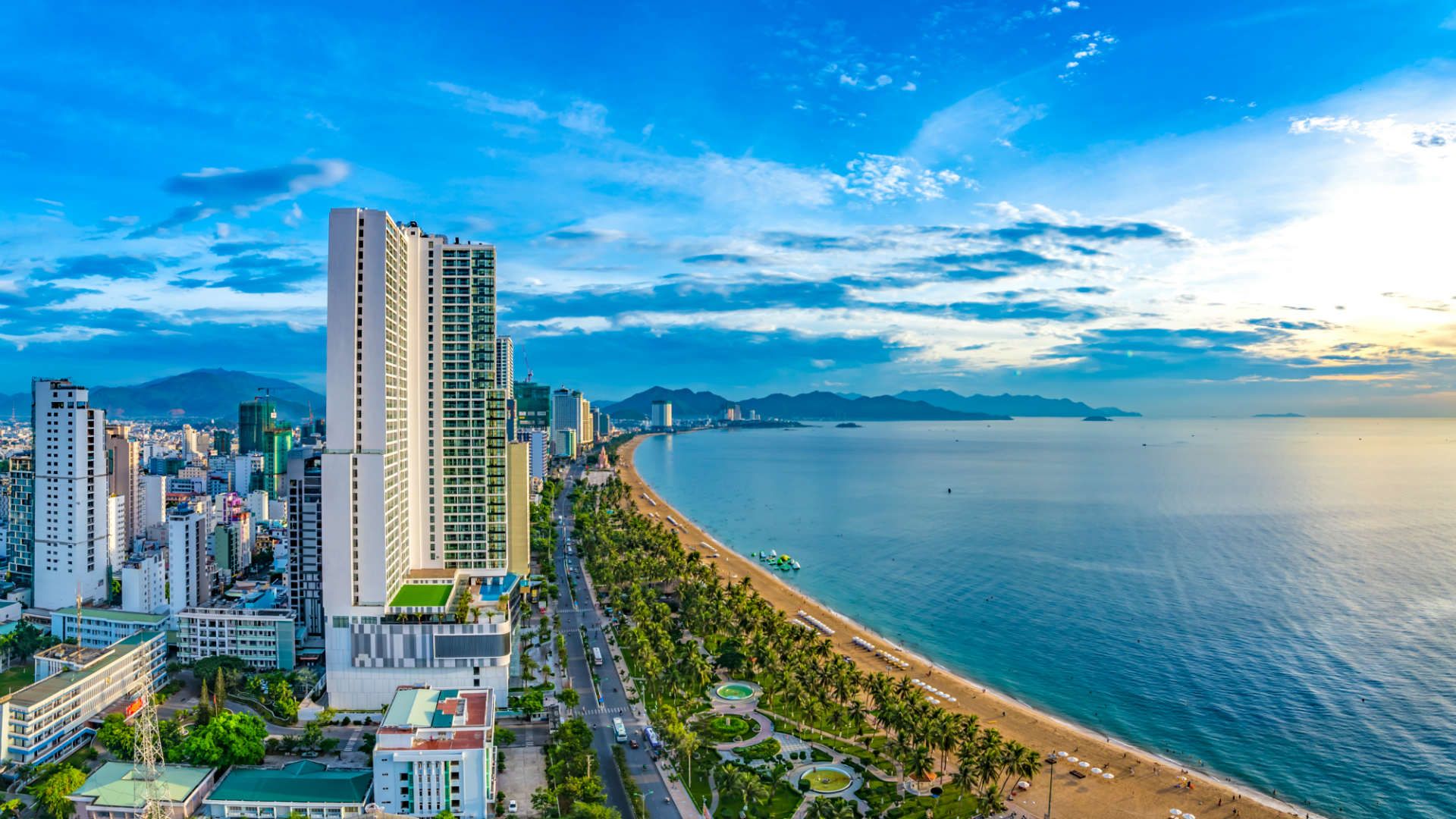Two days and plenty of stray sand later I head for Nha Trang’s train station for the next leg of my trip: I’m heading to Hué.
Once again there’s a stampede when the train pulls in at ten minutes to midnight, but this time I’m positioned near the front of the queue and get on without too much pushing and shoving. The cabin is filthy: the floor strewn with the striped husks of sunflower seeds and the bed sheets grey and rumpled – I’m glad I brought my lightweight sleeping bag.
The train journey to Hué, 300kms north, takes 13 hours, so I have plenty of time to watch the scenery – rice fields, dense jungle and cemeteries dotted with US flags – flash by the following morning, before arriving at Hue’s imposing red brick Ga just after midday.
Backed by the Truoung Son mountains (also known as the Annamite range), Hué is renowned for its bad-tempered weather, especially in Spring. With thunder grumbling and lightning sparking in the sky above, I stroll around the sprawling complex of temples, moats shops and museums in Hué’s walled citadel, which was once home to the Nguyen dynasty.
The train dips inland after Hué so next morning I hop on a bus and take the spectacular three hour bus ride to the coastal Unesco world heritage site Hoi An. A major trading centre for spices until the 17th century, Hoi An’s pedestrian-only old town is magical and I spend a day browsing the clutter of Chinese temples, colonnaded colonial houses, fine jewellery stores and tailor shops. That evening I take a taxi to Danang for the last leg of my journey.
In Danang it’s so warm I’m wearing a short-sleeved t-shirt, but by the time I reach Hanoi on the train the next morning, I’m shivering from the cold. On Vietnam’s northern tip, Hanoi is clouded in fog, but by the time I’ve found a street stand and ordered crispy Bánh Cuốn rice rolls stuffed with minced pork, and a syrupy-sweet cafe sua (coffee), the sun has come out.
There is plenty to see and do in Hanoi and I have plenty of time as I intend to spend the next month here. So, for now my journey is over. While the 726kms train ride from Ho Chi Minh City to Hanoi has been time and economically efficient, I am really looking forward to sleeping in a proper bed.
Book train tickets in Vietnam here, and find timetable and fares information.
Want to learn even more useful information before your upcoming trip to Vietnam? Read our useful tips for traveling in Vietnam.


